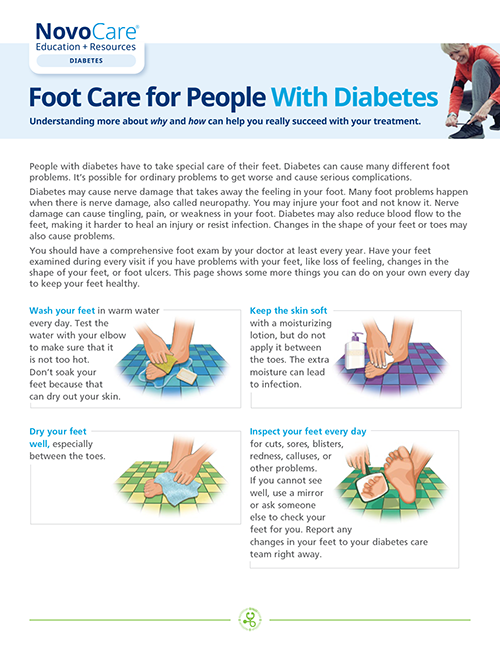
MOVING
Creating a long-term plan

Keeping exercise with diabetes fresh, safe, and smart.
We all want to stay active, but it’s easy to get stuck in a rut and lose interest. Or to push too hard and get hurt. That’s why it’s important to keep your routine fresh and safe. Trying new activities can help keep your exercise plan interesting and fun.
Before starting a physical activity or exercise program, talk to your diabetes care teamDiabetes care teamYour diabetes care team may include a primary care doctor, a diabetes and hormone doctor (endocrinologist), a registered nurse, a diabetes educator, a dietitian, a heart doctor (cardiologist), a foot doctor (podiatrist), an eye doctor (ophthalmologist/optometrist), a kidney doctor (nephrologist), a dentist, a pharmacist, and a mental health professional. and get a medical evaluation if they feel it is needed. A thorough evaluation can help them create an activity program just for you that provides the best results with the lowest risk.
Be sure to ask your doctor about how to treat low blood glucose. If you feel shaky, sweaty, dizzy or have other signs and symptoms of low blood glucose, tell your doctor how often these things happen. They may need to change your diabetes care plan.

How do you get started?
Try stretching and balance movements. They’re a great place to start. They’re simple and help keep joints flexible, reduce the risk of injury, and help you get ready for other activities like walking or swimming. Low impact activities include:
- Yoga and other slow, stretching and balance-based movements
- Using a medicine ball or stretchy bands
- Dancing, which is also an aerobic activity
Also, remember these safety tips for physical activity:
- Bring a carbohydrateCarbohydrateCarbohydrates are the main kinds of food that raise blood glucose levels. Your digestive system changes carbohydrates into glucose, and then uses this glucose as a source of energy for your cells.
There are 3 main types of carbohydrates in food: starches (complex carbohydrates), sugars (simple carbohydrates), and fiber. Fiber is the part of plant foods, including fruits, vegetables, and nuts, that you can’t digest. (carb)-containing snack with you in case your blood glucose drops too low
- Take a day off if you’re not feeling well
- Wear a medical ID bracelet or necklace

Play it safe
If you already have some long-term diabetes-related health problems, you really do need to be careful. It doesn’t mean that you should not exercise or that it won’t help you. It’s just that you need to talk with your diabetes care team first.
The ADA has some suggestions for exercise if you have certain diabetes-related health problems.

Please talk to your doctor about these and other diabetes-related issues.
Stand up for your feet!
Everyone should take care of their feet, but it’s especially important for people with diabetes. High blood glucose can cause damage to the nerves in your feet (called neuropathyNeuropathyOr diabetic neuropathy. A type of nerve damage caused by high blood glucose, often causing pain and numbness in the legs, feet, and other areas. ), which can be painful or can reduce feeling in the feet. This can be a big problem because you may injure yourself and not know it right away. Remember to:

- Check your feet after playing sports or other physical activity. If you find any red, irritated areas, blisters, corns, calluses, or ingrown toenails, call your diabetes care provider or podiatrist right away

- Check inside your shoes and socks for anything that might injure your feet. And check your feet for red, irritated areas. You may need extra padding in some areas of the shoe to prevent friction

- Wear comfortable shoes and socks that fit well. If you have nerve disease or decreased feeling in your feet, it may be hard to tell how well a shoe or sneaker feels when you put it on. If that’s the case, you should consult a podiatrist or a professional shoe fitter (pedorthist) to get a correct fit. For more about shoe selection and fit for people with diabetes, contact the Pedorthic Footwear Association

- Get your feet checked often! Your diabetes care provider needs to check your feet at each visit. Do you and your doctor ever forget? Taking off your shoes and socks every time you go into the exam room is a good way to help make sure that your feet get the attention they deserve
- Tell your diabetes care team right away if you injure your feet! Injured feet can get infected quickly and that can cause serious problems
For more help, download foot care for people with diabetes.
Test your knowledge
If you take insulin, you need to change the way you exercise.
Correct!
Sorry, that's incorrect.
For some people. Your doctor will just want to make sure your blood glucose levels are in a safe range. They may suggest that you check right before and right after physical activity. Physical activity may help lower your blood glucose for up to 24 hours after activity.



